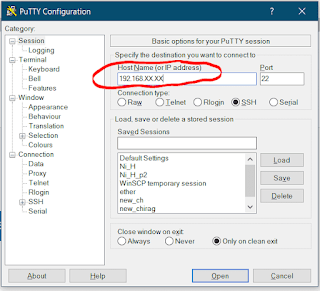How to Build Free Bulletproof SMTP Server in 2024
Digital Marketing having a reliable and secure SMTP (Simple Mail Transfer Protocol) server is Major for businesses and individuals alike. A bulletproof SMTP server ensures that your emails are delivered seamlessly and securely, while also safeguarding against potential threats and vulnerabilities. In this guide, we'll delve into the essential steps and considerations for building a bulletproof SMTP server in 2024.
Free Bulletproof SMTP Server Available
Choose Reliable Hardware and Infrastructure
To lay a solid foundation for your SMTP server, start by selecting robust hardware and infrastructure. Opt for reputable hardware providers and reliable data centers with redundant power supplies, network connectivity, and security measures in place. Consider using dedicated servers or cloud-based solutions for scalability and flexibility.
Select the Right Software:
The choice of software is Major for the performance and security of your SMTP server. Popular options include Postfix, Exim, and Sendmail for Unix-based systems, while for Windows, you might consider Microsoft Exchange Server or MailEnable. Evaluate each option based on your specific requirements, such as scalability, ease of configuration, and security features.
Implement Security Measures:
Security should be a top priority when building a bulletproof SMTP server. Implement SSL/TLS encryption to secure email transmissions and prevent eavesdropping. Configure firewalls to restrict unauthorized access and regularly update your server's software and security patches to mitigate vulnerabilities. Additionally, consider implementing SPF (Sender Policy Framework), DKIM (DomainKeys Identified Mail), and DMARC (Domain-based Message Authentication, Reporting, and Conformance) to prevent email spoofing and phishing attacks.
Authenticate Users and Connections:
Authenticate users and connections to ensure that only authorized entities can access your SMTP server. Utilize strong authentication mechanisms such as SMTP authentication, which requires users to provide valid credentials before sending emails. Implement IP-based access controls to whitelist trusted senders and block suspicious or malicious IP addresses.
Monitor and Analyze Traffic: Regularly monitor and analyze traffic to detect and mitigate potential security threats or anomalies. Use monitoring tools and intrusion detection systems (IDS) to monitor network activity, analyze log files for unusual patterns, and set up alerts for suspicious activities. Implement rate-limiting and throttling mechanisms to prevent abuse and mitigate the impact of spam or denial-of-service (DoS) attacks.
Deploy Anti-Spam and Anti-Malware Solutions: Combat spam and malware by deploying robust anti-spam and anti-malware solutions. Configure spam filters to analyze incoming emails and identify spammy content or suspicious senders. Utilize real-time blacklists (RBLs) and greylisting techniques to block known spammers and suspicious sources. Additionally, deploy antivirus software to scan email attachments for malware and prevent the distribution of malicious content.
Backup and Disaster Recovery: Implement comprehensive backup and disaster recovery strategies to ensure the resilience of your SMTP server. Regularly backup critical data and configurations to secure offsite locations or cloud storage. Create disaster recovery plans outlining procedures for restoring services in the event of hardware failures, data corruption, or other emergencies.
Compliance and Regulatory Considerations: Ensure compliance with relevant regulations and industry standards, such as GDPR (General Data Protection Regulation) and HIPAA (Health Insurance Portability and Accountability Act), if you handle sensitive or personal data. Implement measures to protect the privacy and confidentiality of email communications, including encryption and data anonymization.
In conclusion, building a bulletproof SMTP server in 2024 requires careful planning, implementation of robust security measures, and adherence to best practices. By choosing reliable hardware and software, implementing stringent security controls, and staying vigilant against emerging threats, you can establish a resilient and secure email infrastructure that ensures the seamless delivery of messages while safeguarding against potential risks and vulnerabilities.


.png)
Comments